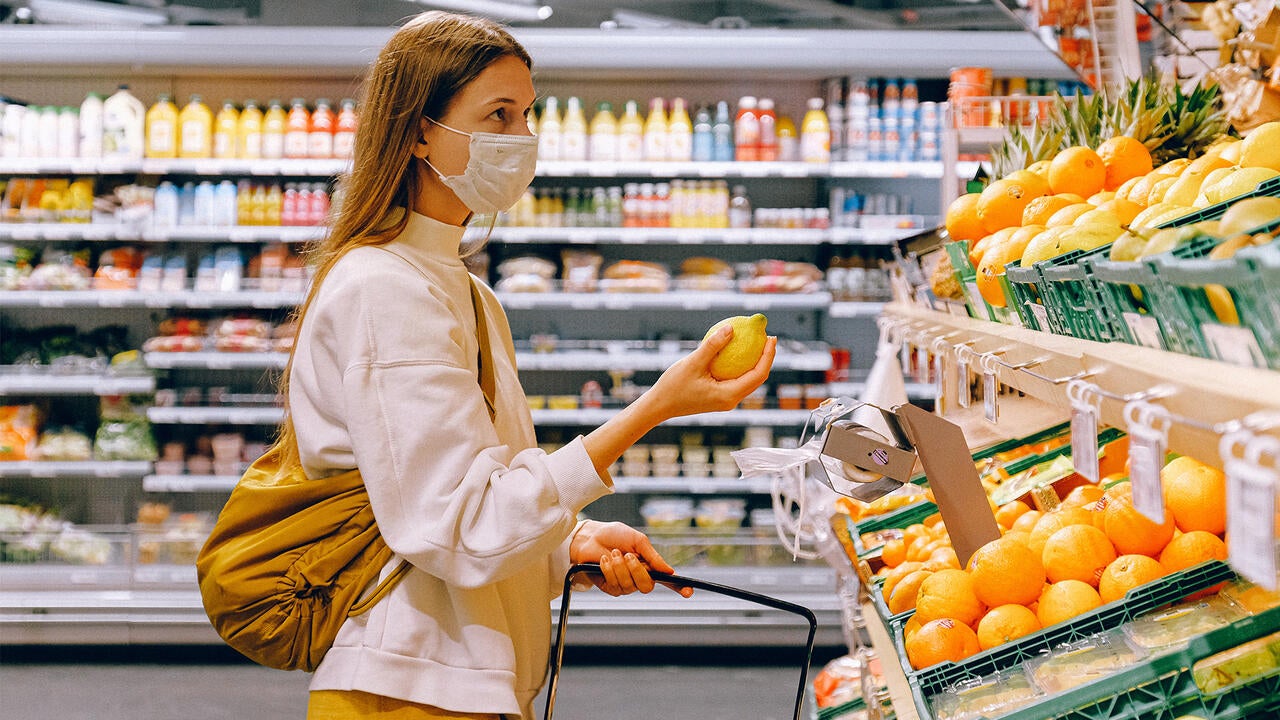
What’s in stock?
Crowdsourcing platform with Waterloo connection provides users a snapshot of grocery store supply levels

Crowdsourcing platform with Waterloo connection provides users a snapshot of grocery store supply levels
By Natalie Quinlan University RelationsIt’s a necessity many of us dread, especially right now — grocery shopping has never taken more strategy or time.
With the current need for social distancing, a more challenging environment for grocery stores and shortages in some essential supplies, a Waterloo professor and PhD student are hoping to save you unnecessary trips to the store.
Cue What’s in Stock — a platform that uses crowdsourced data to notify users of supply levels at their local grocery stores.
Co-developed by Rob Feick, a professor with the School of Planning, Majid Hojati, a PhD student with the Waterloo-Laurier Graduate Geography program, and Colin Robertson, a professor at Wilfrid Laurier, the website operates off the Google Maps infrastructure, making it available around the world. Their inspiration? Toilet paper … or lack thereof.
“When there was a rush on toilet paper and some stores were completely sold out, that’s about the time we started thinking we need an app for toilet paper, but it quickly moved beyond that,” Feick says. “We thought: how can people who are out shopping share information about what is or isn’t in stock so others can plan their shopping trips better and hopefully, minimize unnecessary exposure?”
Submitting their idea to Google Map’s COVID-19 Developer Resource Hub, it was only a few days later that the trio were notified that their app was accepted. The help from Google allows the team to not only have access to the tech-company’s map and store data, but also operate for free.
Hojati leveraged his experience of designing platforms for the purposes of indoor mapping and routing in his home country of Iran when creating the What’s in Stock app.
“It was crucial for us to develop and test the whole app as quickly as possible, which is why we selected a web app as our platform, which allowed us to bypass the development of individual applications for Android and iOS,” Hojati says. “During this unusual situation, we saw an opportunity to help people, in this case by providing information on store inventories and wait times.”
Now, two weeks since release, people from all over the world have accessed the platform including users in Canada, the United States, United Kingdom, Germany, Austria, India and China. But, Feick and Hojati are encouraging more.
“It’s based on crowdsourcing, so it isn’t something that’s hooked up directly to supply chains that grocery stores themselves have. Instead, it's based on individual shoppers sharing reports with each other,” Feick explains.
When asked if Feick noticed any patterns during their supply reports, he responded that baking supplies are becoming the new trend.
“Lately, there’s been a bit of a run on yeast and flour as it seems many people are turning to baking cookies or bread with more time on their hands,” Feick says. “I think it’s safe to say that a lot of these shortages are based more on changes in consumption patterns than changes in the supply chains at stores — that’s why it’s so important for us to share this information with each other.”
What’s in Stock can be accessed from your home computer, tablet or mobile device.

Read more
Like epidemiologists, climate science knows how to flatten our climate curve, but politicians must listen first

Read more
As oil prices plunge below zero during the COVID-19 crisis, grassroots movements re-imagine the global response to the climate crisis

Read more
An ambitious research collaboration with Habitat for Humanity is reimagining home ownership across Waterloo Region and Canada
The University of Waterloo acknowledges that much of our work takes place on the traditional territory of the Neutral, Anishinaabeg, and Haudenosaunee peoples. Our main campus is situated on the Haldimand Tract, the land granted to the Six Nations that includes six miles on each side of the Grand River. Our active work toward reconciliation takes place across our campuses through research, learning, teaching, and community building, and is co-ordinated within the Office of Indigenous Relations.